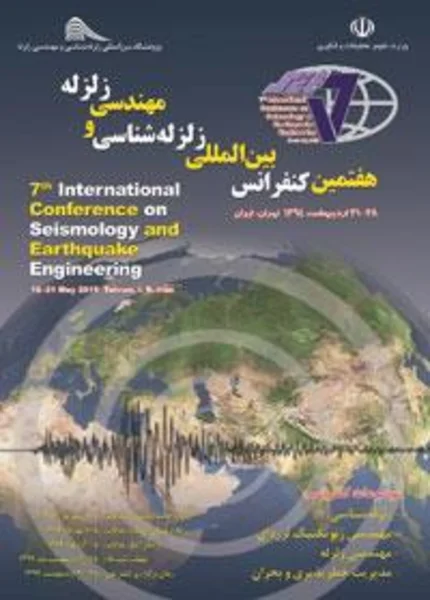-
two dimensional velocity field of the iranian plateau
جزئیات بیشتر مقاله- تاریخ ارائه: 1394/02/01
- تاریخ انتشار در تی پی بین: 1394/02/01
- تعداد بازدید: 625
- تعداد پرسش و پاسخ ها: 0
- شماره تماس دبیرخانه رویداد: -
long-term crustal flow of the iranian plateau is computed using a kinematic model. three independent data sets (geometry of the seismically active faults mapped in prior geological studies, geodetic benchmark velocities, and principal stress directions) are combined using a finite-element model to better understand regional geodynamics of the iranian plateau. we are successful to find the best kinematic model, in which all the data sets are fitted at a rms level of 1.0 datum standard deviation. the best fitted model, for the first time, provides the velocity field over the iranian plateau from all available kinematic data. spatial distribution of displacement rates within the plateau shows a mixed pattern, in which semi-rigid blocks (e.g. lut desert block and south caspian block) are embedded in a deformation zone (e.g. the zagros and alborz mountain belt). our estimated rates are consistent with the past earthquakes, and are in the range of previous published rates, in which geodetic benchmark velocities are merely analyzed using different modeling techniques. sharp changes of displacement rates in some region (e.g. northeastern iran) show high strain rates, and hence using elastic block modeling seems not to be suitable for fault slip rate estimation. moreover, the obtained results are useful to calculate the strain rate field, which could be considered as an indicator for undiscovered or/and unmapped faults.
مقالات جدیدترین رویدادها
-
استفاده از تحلیل اهمیت-عملکرد در ارائه الگوی مدیریت خلاقیت سازمانی و ارائه راهکار جهت بهبود
-
بررسی تاثیر ارزش وجوه نقد مازاد بر ساختار سرمایه شرکت های پذیرفته شده در بورس اوراق بهادار تهران
-
بررسی تأثیر سطح افشای ریسک بر قرارداد بدهی شرکت های پذیرفته شده در بورس اوراق بهادار تهران
-
بررسی تأثیر رتبه بندی اعتباری مبتنی بر مدل امتیاز بازار نوظهور بر نقد شوندگی سهام با تأکید بر خصوصی سازی شرکت ها
-
تأثیر آمیخته بازاریابی پوشاک ایرانی بر تصویر ذهنی مشتری پوشاک ایرانی (هاکوپیان)
-
پیش بینی شدت نارسایی قلبی به کمک رادیوگرافی قفسه صدری نمای رخ در بیماران بستری در بخش قلب بیمارستان بوعلی اردبیل
-
تغییرسازمانی
-
تشخیص و طبقه بندی سرطان رحم با استفاده از روش ترکیبی برش گراف و بخش بندی رنگ
-
a tableau based decision procedure for an expressive fragment of hybrid logic with binders, converse and global modalities
-
the archaeology of tula, hidalgo, mexico
مقالات جدیدترین ژورنال ها
-
مدیریت و بررسی افسردگی دانش آموزان دختر مقطع متوسطه دوم در دروان کرونا در شهرستان دزفول
-
مدیریت و بررسی خرد سیاسی در اندیشه ی فردوسی در ادب ایران
-
واکاوی و مدیریت توصیفی قلمدان(جاکلیدی)ضریح در موزه آستان قدس رضوی
-
بررسی تاثیر خلاقیت، دانش و انگیزه کارکنان بر پیشنهادات نوآورانه کارکنان ( مورد مطالعه: هتل های 3 و 4 ستاره استان کرمان)
-
بررسی تاثیر کیفیت سیستم های اطلاعاتی بر تصمیم گیری موفق در شرکتهای تولیدی استان اصفهان (مورد مطالعه: مدیران شرکتهای تولیدی استان اصفهان)
-
بررسی نقش رهبری تحول گرا بر خلاقیت سازمانی با توجه به نقش میانجی حمایت سازمانی درک شده (مورد مطالعه، شرکت ایران خودرو)
-
آشنایی با شاخصه ها و ویژگی های تعلیم و تربیت اسلامی و بهره گیری از آن ها برای آموزش کودکان دبستانی
-
تأثیر جریان نقد آزاد مازاد به واسطه کیفیت حسابرسی بر مدیریت سود شرکت های پذیرفته شده در بورس اوراق بهادار
-
برقراری امنیت کاربران بانکی بوسیله احراز هویت بیومتریک اثر انگشت توسط رمزنگاری جریان
-
بررسی پیشنهاد « ادبیات کاربردی » پی یر بَیار و ایده « استلزام » شوشانا فلمن از منظر ژک لکان




سوال خود را در مورد این مقاله مطرح نمایید :